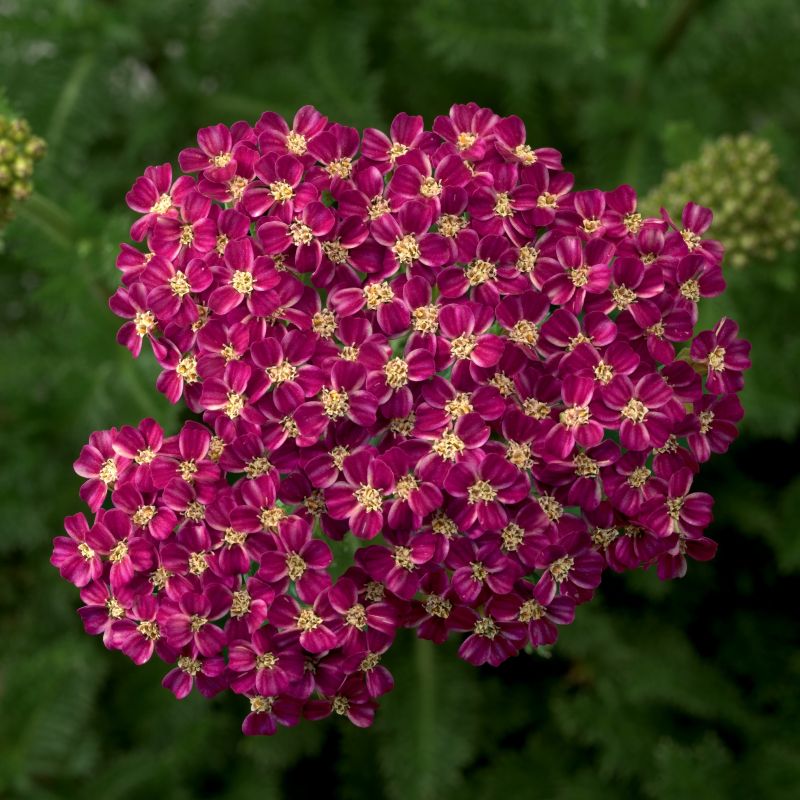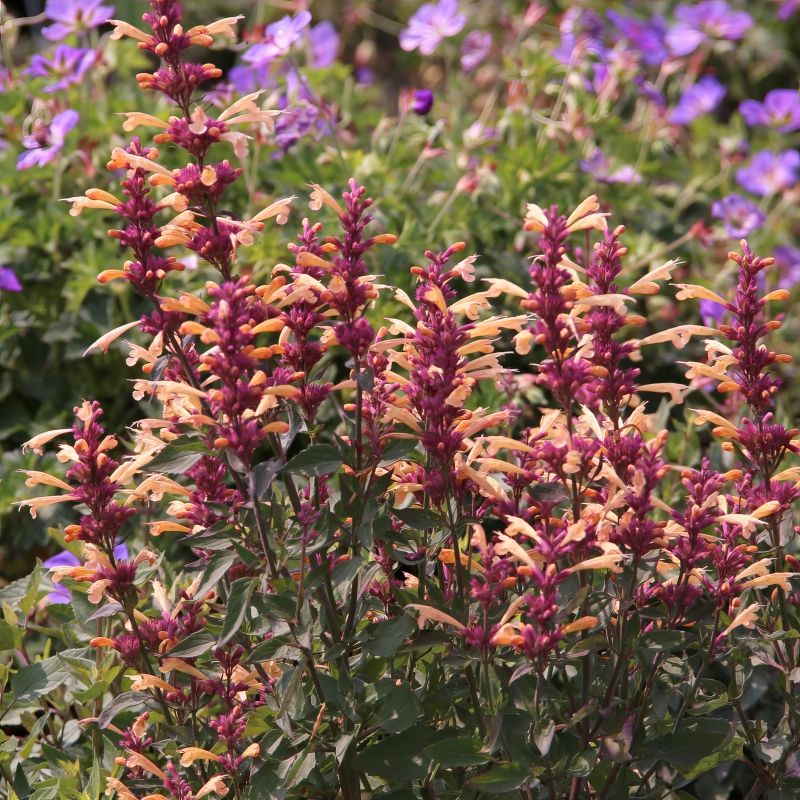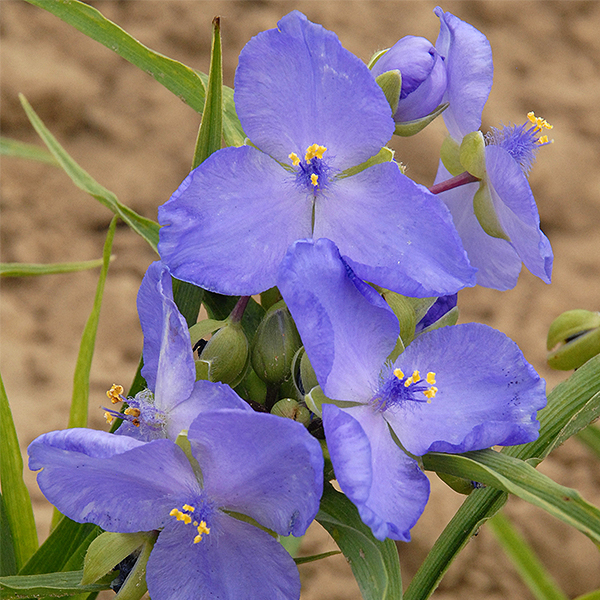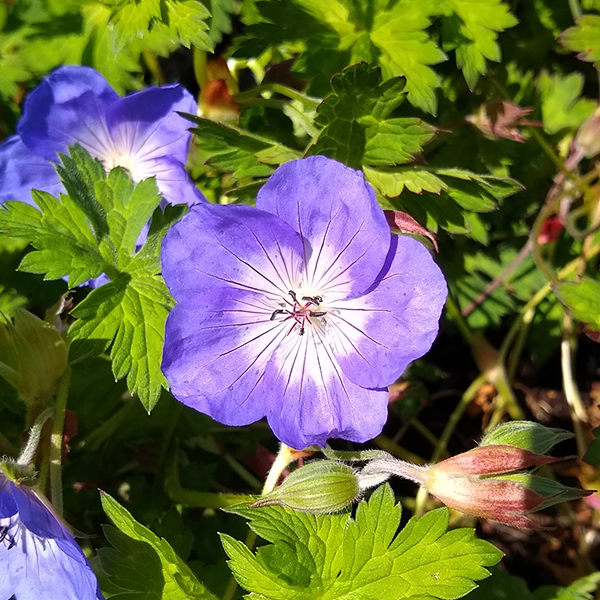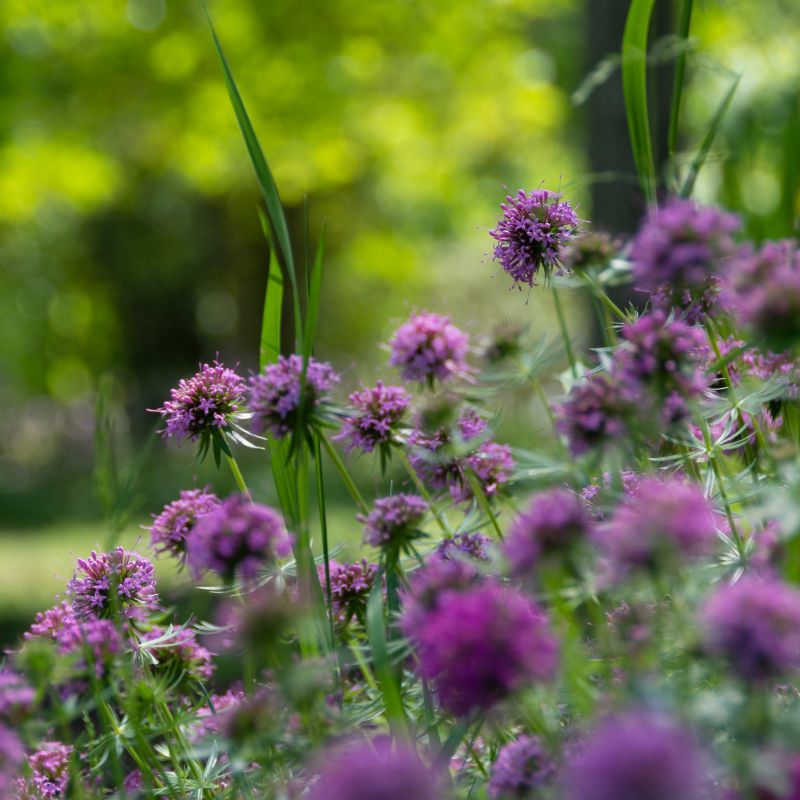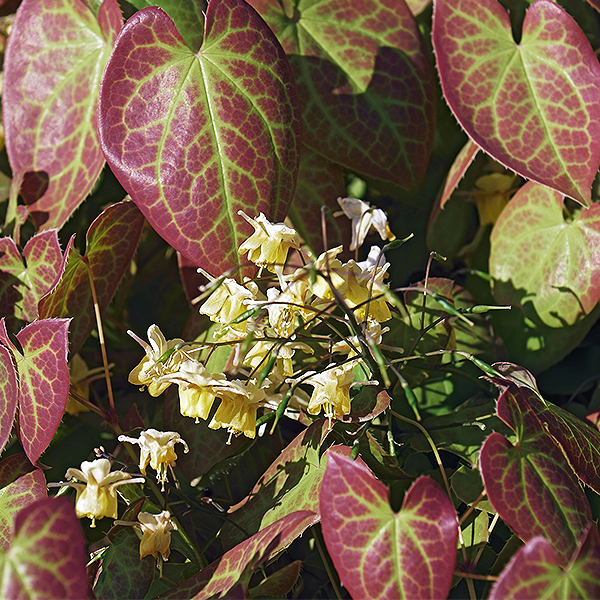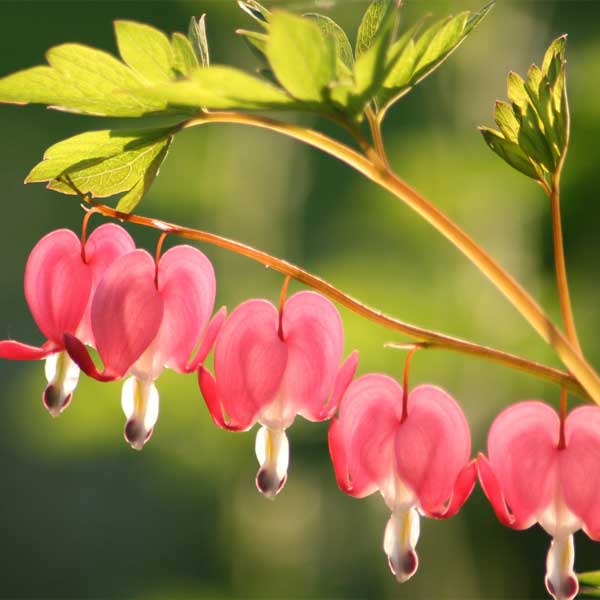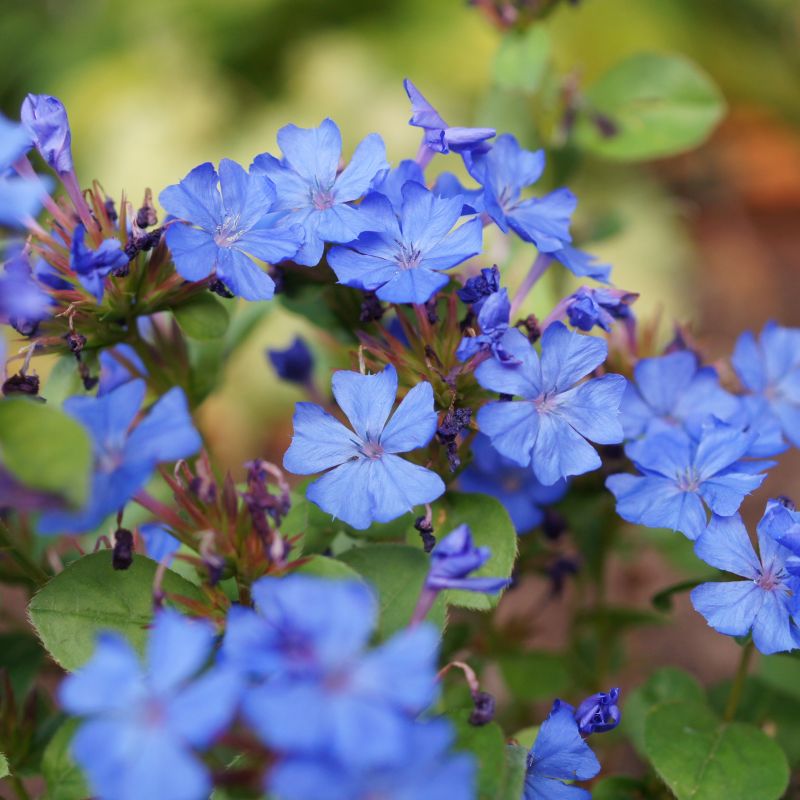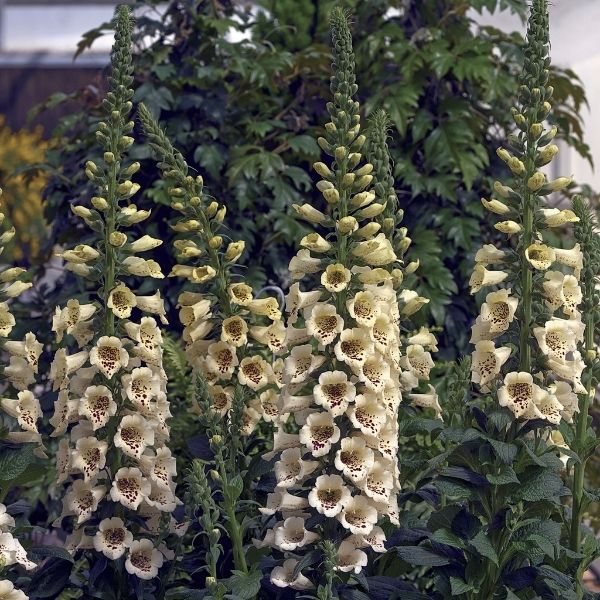
Camelot Cream Foxglove
Digitalis x 'Camelot Cream'
12 reviews
Camelot Cream Foxglove
Digitalis x 'Camelot Cream'
12 reviews
- Produces elegant creamy white flowers
- Tolerant of deer and rabbits
- Attracts pollinators such as butterflies and bees
- Recommended by landscape designers for optimal fit in real yards
$32.00
$46.00
30% Off
- Ships to 43215 in 3 to 7 days
- Free Shipping Over $150
- Plant Arrival Guarantee
- In Stock
- Free Plant Consult
$200 - Landscape-Approved: Every Plant We Sell Comes With Design Expertise Behind It
- Premium 1 Gallon
- 1 Gallon
Not just beautiful - intentionally selected by ShrubHub's 3D landscape design team to fit real-world spaces and maximize yard potential.
Why Camelot Cream Foxglove?
Camelot Cream Foxglove is a stunning perennial plant that features creamy white flowers with speckled throats. These flowers add a touch of elegance to any garden or landscape. With its tall spikes and vibrant color, Camelot Cream is a favorite among gardeners looking to add height and visual interest to their outdoor spaces. It is a low-maintenance plant that thrives in partial shade.
People who loved this plant also bought
Sunlight
Camelot Cream Foxglove requires partial to full sun for optimal growth and blooming. It is important to provide at least 4-6 hours of sunlight per day in a well-draining soil to ensure healthy and vibrant plants.
Watering
Camelot Cream Foxglove plants require regular watering, especially during dry periods. They prefer consistently moist, well-draining soil to thrive. Avoid overwatering as it can cause root rot. Water deeply at the base of the plant to encourage strong root
Fertilizing
Camelot Cream Foxglove requires a balanced fertilizer with a higher potassium content and lower nitrogen content. It is important to avoid over-fertilizing as it can lead to weak and leggy growth. A slow-release fertilizer applied in early spring is recomm
Camelot Cream Foxglove (Digitalis x 'Camelot Cream')
The Camelot Cream Foxglove, also known by its botanical name Digitalis x 'Camelot Cream', is a stunning perennial plant that produces elegant spikes of cream-colored tubular flowers with speckled throats. This variety of foxglove is highly prized for its unique color and graceful appearance, making it a popular choice for adding beauty and interest to garden landscapes.
The Camelot Cream Foxglove typically blooms in late spring to early summer, attracting bees and butterflies with its nectar-rich flowers. This plant can reach a height of 2-3 feet and is known for its upright growth habit.
Camelot Cream Foxglove thrives in well-drained, moist soil and prefers partial shade to full sun. It is relatively low-maintenance and deer resistant, making it an excellent choice for gardeners of all skill levels.
Whether planted in borders, containers, or cottage gardens, the Camelot Cream Foxglove is sure to add a touch of elegance and charm to any outdoor space.
Plant Information:
| Botanical Name: | Digitalis x 'Camelot Cream' |
| USDA Zones: | 4 - 8 |
| Water: | Medium |
| Exposure: | Full Sun |
| Soil Needs: | Well Drained |
| Mature Height: | 3 - 4 feet |
| Mature Spread: | 18 - 24 inches |






Pollination Info
Pollination Information for Camelot Cream Foxglove
The Camelot Cream Foxglove (Digitalis x 'Camelot Cream') is a perennial plant that attracts pollinators with its colorful tubular flowers. The plant is primarily pollinated by bees, particularly bumblebees and solitary bees, which are able to access the nectar and pollen within the tubular flowers.
Additionally, hummingbirds may also be attracted to the brightly colored flowers of the Camelot Cream Foxglove, as they are known to feed on the nectar of tubular flowers.
It is important to ensure a healthy population of pollinators in the garden to ensure successful pollination of the Camelot Cream Foxglove and the production of viable seeds. Providing a diverse range of flowering plants throughout the year can help attract and support pollinators in the garden.
FAQ
Camelot Cream Foxglove (Digitalis x 'Camelot Cream') FAQ
What is Camelot Cream Foxglove?
Camelot Cream Foxglove is a hybrid plant known for its beautiful cream-colored flowers and tall spikes.
How do I plant Camelot Cream Foxglove?
Plant Camelot Cream Foxglove in well-drained soil in a location that receives partial to full sunlight. Space the plants about 12 inches apart to allow for proper air circulation.
How often should I water Camelot Cream Foxglove?
Water Camelot Cream Foxglove regularly, keeping the soil consistently moist but not waterlogged. Be careful not to overwater, as this can cause root rot.
When does Camelot Cream Foxglove bloom?
Camelot Cream Foxglove typically blooms in late spring to early summer, depending on the climate and growing conditions.
How do I deadhead Camelot Cream Foxglove?
To promote continuous blooming, deadhead spent flowers by removing them at the base of the stem. This will encourage the plant to produce new flower spikes.
Is Camelot Cream Foxglove poisonous?
Yes, Camelot Cream Foxglove is toxic if ingested. Keep this plant away from children and pets, and wear gloves when handling it to avoid skin irritation.
Can Camelot Cream Foxglove be grown in containers?
Yes, Camelot Cream Foxglove can be grown in containers as long as they provide enough space for the plant to grow and good drainage. Make sure to water regularly and fertilize as needed.
Planting & Care
Planting and Care for Camelot Cream Foxglove
Planting: Choose a location that receives partial to full sun with well-drained soil. Dig a hole twice as wide as the root ball and slightly deeper. Place the plant in the hole, backfill with soil, and water thoroughly.
Watering: Keep the soil consistently moist but not waterlogged. Water regularly, especially during hot, dry periods.
Fertilizing: Fertilize with a balanced, slow-release fertilizer in early spring and mid-summer to promote healthy growth and blooming.
Pruning: Deadhead spent flowers to encourage continuous blooming and prevent self-seeding. Cut back the foliage in late fall or early spring to tidy up the plant.
Pest and Disease Control: Watch out for aphids and slugs, which can damage the plant. Treat any infestations promptly and use slug bait if needed.
Support: Foxgloves may need support as they grow tall and produce heavy flower spikes. Use stakes or a plant support ring to keep them upright.
Winter Care: Mulch around the base of the plant in late fall to protect the roots during winter. Cut back any remaining foliage after the first frost.
With proper care, your Camelot Cream Foxglove will reward you with beautiful cream-colored flowers and lush foliage throughout the growing season.
Check Out These Verified Customer Reviews:
Customer Reviews
4.8 out of 5 based on 12 reviews
Thank you! Your review has been submitted.
Easy website navigation
Absolutely gorgeous Camelot Cream Foxglove! The flowers are so vibrant and the plant looks healthy.
Beautiful cream color
Item has been added to your cart.





